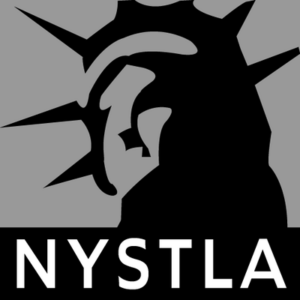Construction is one of the most dangerous industries in New York. Workers often face hazardous conditions, working with heavy machinery, at great heights, and in environments where accidents can happen unexpectedly. While most people think that if a worker is injured on the job, their only option is to file for workers’ compensation, that is not always the case. There are situations where other parties may be held responsible for an accident. This is known as third-party liability. Understanding how third-party liability works in New York construction accident cases can make a big difference for injured workers seeking full compensation for their injuries. At, The Nicotra Law Firm, PC, we are here to guide you through the legal process and help you navigate the complexities of your case.
What is Third-Party Liability?
In construction accidents, third-party liability refers to the responsibility of someone other than the injured worker’s employer for the worker’s injuries. In most cases, workers’ compensation laws prevent employees from suing their employers directly, even if the employer’s negligence caused the injury. However, if someone else, like a contractor, manufacturer, or property owner, is responsible for the accident, the injured worker may be able to pursue a third-party claim against them.
For example, if a worker is hurt because a piece of machinery malfunctioned, the manufacturer of that machine could be held responsible if it is proven that the machine was defective. Similarly, if a worker is injured due to unsafe conditions on a work site that is managed by a property owner or general contractor, that party might be liable for failing to provide a safe environment. Third-party liability claims allow injured workers to seek additional compensation beyond what they would receive through workers’ compensation.
Common Third Parties in Construction Accident Cases
There are several types of third parties that could be responsible for a construction accident. One common party is contractors and subcontractors. Many construction projects involve multiple contractors working together, and sometimes a worker from one company is injured because of the negligence of a contractor from another company. In these cases, the injured worker may be able to file a third-party claim against the negligent contractor.
Another common third party is equipment manufacturers. Construction sites rely on many types of heavy machinery and equipment, such as cranes, bulldozers, and scaffolding. If any of these machines or tools are defective and cause an injury, the manufacturer of the defective product could be held accountable.
Property owners also play a role in construction accidents. If a property owner fails to maintain safe conditions on the site or does not warn workers of potential hazards, they could be liable if a worker is injured. Additionally, architects and engineers could be held responsible if faulty design or improper planning leads to a construction accident.
Differences Between Workers’ Compensation and Third-Party Claims
Workers’ compensation and third-party liability claims are different in several ways. Workers’ compensation is a no-fault system that provides benefits to workers who are injured on the job, regardless of who is at fault for the accident. These benefits typically include coverage for medical expenses and a portion of the worker’s lost wages. However, workers’ compensation does not cover non-economic damages such as pain and suffering.
On the other hand, third-party claims allow injured workers to seek additional compensation, including damages for pain and suffering, emotional distress, and full wage loss. In a third-party claim, the injured worker must prove that the third party was negligent and that their negligence directly caused the injury. While this can be more challenging than filing for workers’ compensation, the potential recovery can be much greater.
It is important to note that an injured worker can pursue both workers’ compensation and a third-party claim simultaneously. Filing for workers’ compensation does not prevent a worker from seeking additional damages through a third-party lawsuit. However, the amount the worker receives from a third-party claim may be reduced by the workers’ compensation benefits they have already received.
The Role of New York Labor Laws in Third-Party Liability
New York has specific labor laws that provide additional protections for construction workers, and these laws play a significant role in third-party liability cases. One of the most important laws is New York Labor Law Section 240, commonly known as the “Scaffold Law.” This law requires property owners and contractors to provide proper safety equipment, such as scaffolding, ladders, and harnesses, to workers who are performing tasks at heights. If a worker is injured in a fall because the necessary safety measures were not in place, the property owner or contractor can be held strictly liable.
New York Labor Law Section 241 also provides protections for construction workers by requiring that safety regulations are followed on work sites. This includes measures to protect workers from hazards such as falling objects, electrical hazards, and unsafe machinery. If these safety regulations are violated and a worker is injured as a result, the property owner or contractor may be held liable.
These labor laws are unique to New York and provide strong protections for construction workers. They make it easier for injured workers to hold third parties accountable when safety violations contribute to an accident. In many cases, these laws allow injured workers to pursue third-party claims even if they are partially at fault for the accident.
Challenges in Proving Third-Party Liability
While third-party liability offers a way for injured workers to seek additional compensation, proving that a third party is responsible can be difficult. Workers must show that the third party owed them a duty of care, that the third party breached that duty, and that the breach directly caused the injury. Gathering evidence is critical in these cases. This may include safety inspection reports, witness statements, photographs of the accident scene, and testimony.
Related Videos
How should I choose a personal injury attorney for my claim?
Insurance companies dirty tricks
In addition, determining who is responsible for the accident can be complicated, especially on large construction sites with multiple parties involved. Liability may be shared among several parties, and each party may try to shift the blame onto someone else. For this reason, it is essential for injured workers to seek legal representation from an experienced attorney who can investigate the accident, identify the responsible parties, and build a strong case.
How Third-Party Liability Can Benefit Injured Workers
Third-party liability claims provide injured workers with an opportunity to receive more comprehensive compensation than what is available through workers’ compensation alone. Workers’ compensation benefits are often limited and may not cover all of the financial and emotional losses an injured worker experiences. For example, workers’ compensation does not compensate for pain and suffering or the long-term impact an injury may have on the worker’s quality of life.
By pursuing a third-party claim, injured workers can seek compensation for these additional damages. This can make a significant difference, especially for workers who suffer severe or life-altering injuries that prevent them from returning to work. Third-party claims can help injured workers and their families recover the financial support they need to move forward after an accident.
The Importance of Legal Representation
Navigating a third-party liability claim can be complex, and injured workers should not attempt to handle these cases on their own. The legal process involves gathering evidence, filing the necessary paperwork, negotiating with insurance companies, and possibly taking the case to court. An experienced construction accident attorney understands the unique challenges of third-party liability cases and can guide workers through the process.
Having legal representation also ensures that the worker’s rights are protected. Insurance companies and third-party defendants may try to minimize their liability by offering a low settlement or denying responsibility for the accident. An attorney will advocate for the worker’s best interests and fight for the compensation they deserve.
If you or a loved one has been injured in a construction accident in New York, it is important to understand your legal options. You may be entitled to more than just workers’ compensation benefits if a third party is responsible for your injuries. The experienced attorneys at The Nicotra Law Firm, PC are dedicated to helping injured workers pursue justice and obtain the full compensation they deserve. Contact our firm today to discuss your case and learn how we can assist you in seeking the compensation you are entitled to under the law.








